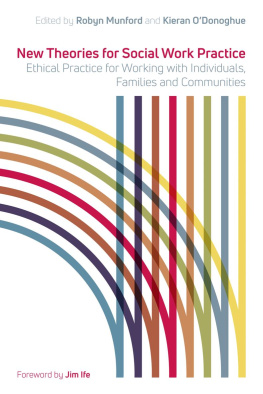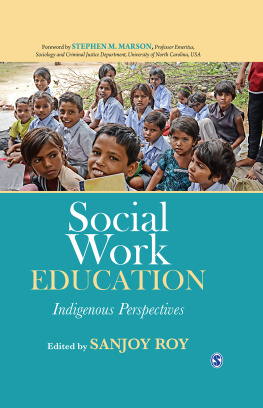Gabriela Misca and Peter Unwin, under exclusive licence to Springer Nature Limited 2019
All rights reserved. No reproduction, copy or transmission of this publication may be made without written permission.
No portion of this publication may be reproduced, copied or transmitted save with written permission or in accordance with the provisions of the Copyright, Designs and Patents Act 1988, or under the terms of any licence permitting limited copying issued by the Copyright Licensing Agency, Saffron House, 610 Kirby Street, London EC1N 8TS.
Any person who does any unauthorized act in relation to this publication may be liable to criminal prosecution and civil claims for damages.
The authors have asserted their rights to be identified as the authors of this work in accordance with the Copyright, Designs and Patents Act 1988.
First published 2019 by
RED GLOBE PRESS
Red Globe Press in the UK is an imprint of Springer Nature Limited, registered in England, company number 785998, of 4 Crinan Street, London, N1 9XW.
Red Globe Press is a registered trademark in the United States, the United Kingdom, Europe and other countries.
ISBN 9780230368439 paperback
This book is printed on paper suitable for recycling and made from fully managed and sustained forest sources. Logging, pulping and manufacturing processes are expected to conform to the environmental regulations of the country of origin.
A catalogue record for this book is available from the British Library.
A catalog record for this book is available from the Library of Congress.
The relevance of child and adolescent psychology to social work
Key learning outcomes
Following the study of this chapter, learners will be able to:
Interpret the Professional Capabilities Framework (PCF) and the Knowledge and Skills Statement (KSS) on children and families.
Develop critical, broad awareness of the context of contemporary social work with children.
Critically reflect on the importance of child and adolescent psychology to social work.
Reflect on the dilemmas within inter-agency working.
Analyse some of the key serious case reviews.
Introduction
This chapter will introduce the rationale behind this book and how it is designed to help social workers and social work students to use psychological knowledge to best inform their interactions with children and families. The need for psychological knowledge in a social work culture, where targets and budgets have dominated for some years, is all the more crucial. Practical tasks, reflective points and case studies will be used throughout the book and all are taken from real-life examples designed to bring psychological theory and knowledge alive. The hypothetical caseload of an imaginary student social worker, Helen, will be used throughout to parallel the likely challenges found with present-day social worker caseloads. It is additionally recommended that readers draw on core psychological textbooks, such as those by Nicolson (2014) and Sudbery (2009), which provide greater depth and detailed theoretical knowledge than was possible to include in this wide-ranging book, which is primarily concerned with key psychological applications across many areas of contemporary social work practice.
This chapter also sets the wider organizational and political context in which social work takes place and focuses on the importance of relationship-based practice (RBP) (Ruch, 2010) as a necessary underpinning of effective social work with children and families.
The importance of child and adolescent psychology to social work
Contemporary social work with children and young people is in turmoil, and this book will suggest that one of the reasons for this turmoil is a lack of psychological understanding about the issues behind the behaviours of children and families in todays fast-changing world. This book differs from most psychology texts in that it introduces the basics in a range of theories and models and applies them to social work practice. It aims to provide the reader social work students and practitioners with an overview of the fit between key psychological theories and concepts with social work practice. This book will also act as guidance for students of psychology and related disciplines who seek understanding of how to apply psychological concepts and theories in practice with children and young people, and aid their career planning and development.
The rapid development of social media in particular has brought with it a culture wherein bullying and a relentless focus on looks and body image, together with distorted views of sexualities, have presented todays children and young people with new and frightening pressures (Hamm et al., 2015). The mental health of children and young people in the UK is stated to be at an all-time low, with some 800,000 children suffering from mental health difficulties (Office of the Childrens Commissioner, 2017). Could so many children really be experiencing such mental health problems due to the contemporary pressures noted above? Or are children not being allowed to deal with what might be the normative pressures of a social media-dominated childhood are we too quick to rush for psychological services or to label children as having various forms of mental illness?
Different because various forms of terminology are used when describing psychological states of mind, and this book will explore social and emotional well-being, which is taken largely to refer to positive mental health and wellness. According to Stirling and Emery (2016), this terminology encompasses:
[a] sense of optimism, confidence, happiness, clarity, vitality, self-worth, achievement, having a meaning and purpose, engagement, having supportive and satisfying relationships with others and understanding oneself, and responding effectively to ones own emotions.
(p. 5)
Mental health problems will be the term used in this book to refer to the emotional and social challenges faced by children and young people, and mental illness will be used to indicate that some kind of formal threshold or diagnosis has been reached (Padmore, 2016). This book will take stock of the pressures, including the rising rates of family breakup and the issues within reconstituted families, to suggest ways in which professionals, such as social workers and psychologists, might best help families and children to lead fulfilling lives.
Professional practice roles in the field of child and adolescent psychology are not easy ones for professionals, and retention rates in childrens social care are poor (Bowyer & Roe, 2015). This is partly because of the nature of the abuse and violence witnessed daily by social workers, but also because of a political and managerial system that not only starts from the premise that no child will ever be harmed by a carer, but which also then shackles the ability of social workers and their educational and health colleagues from forming consistent and effective relationships with those families and children. The ever-increasing layers of audit, inspection and bureaucracy have been widely critiqued for keeping social workers from dealing with the real issues (Chararbaghi, 2007; Harris & Unwin, 2009; Tait, 2014). Social work has also been hounded by the press after a series of child tragedies, and is under increasing pressure from neoliberal government regimes, with their associated emphases on targets and performance management (Harris & Unwin, 2009; Jones, 2014). Social work is looking for a new identity and new credibility, as articulated by the Social Work Reform Board (SWRB) (DfE, 2010). Our vulnerable children and young people are looking for competence, commitment and consistency from social workers who have the time and insight to know and understand them. Social work needs to develop cultures that retain staff who can take pride and satisfaction in work which is rooted in a strong psychological understanding of how families, communities and organizations work.





